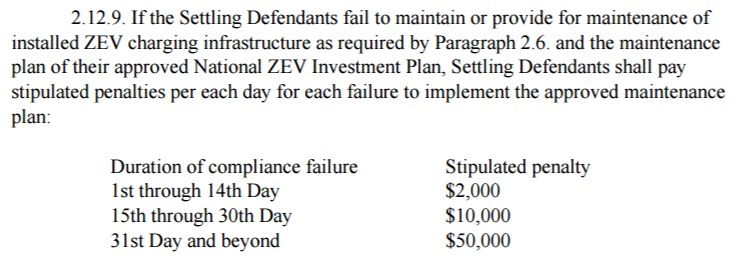I agree here. I'm a fierce hater of the damage done by CARB and VW, but this is true.
@Ulmo, I apologize if we've tread this ground before, but I have forgotten: what is the damage you perceive done by CARB?
That's outdated now that the Bolt is available. And soon, the Tesla Model 3 will join it. But, I look at it like this: even if the initial stations are crappy, the buildouts will continue past the initial passes.
In a way, the Politically Correct groups are once again screwing the low income people, by giving them something they don't want, and making certain that their area is already covered with the worst possible version (the first version) of everything available for that area, such that the poorest people will have to wait the very longest for the regular high quality chargers of the next decade to replace the already installed crappy versions which have to earn their capital investments before being upgraded.
While I probably wouldn't spend much time arguing over who is Politically Correct or not, you might be surprised to learn that I wholeheartedly agree with you. While
@McRat makes an interesting point that it is the car that needs the charger, not the owner who may have a low income, I think it's very hard to make the argument yet for a low income person to own an EV. It is my belief -- without data, without proof -- that most people operating on a low income are relying on much older, inexpensive cars. Cars that can take them wherever they want to go, whenever they want to go, with a very familiar fueling infrastructure. Also, a very familiar and potentially very inexpensive repair infrastructure! EVs may well require less repair, but when they do require attention, it's always at the dealer. You can't put one up on blocks, dig into its infrastructure, run out to the auto parts store, and take care of it all yourself (or via a neighbor, friend, local mechanic).
I think it's like pushing on a wet noodle to put EVs into the hands of people who can't afford to own and operate them, and who almost certainly don't have a spare Prius or gas-guzzler lying around when the EV doesn't fit their use case.
The thing that made Model S so great was that it could handle a *large* fraction of the typical automobile use cases. So for someone like me -- in fact, for many people! -- a Model S could completely replace an ICE. And us early adopters had the patience, time and money to deal with range issues, repair issues, whatever. People have a hard time understanding that Model S was expensive but practical in a way that other EVs were and in most cases still are not.
Model 3 will change the economic equation. Add three years to get to seriously cheaper used Model 3s. *Those* are the cars that you can start feeling good about selling to lower-income people. THEN you need a program to help them solve home charging. THEN other chargers make sense. Other FAST, modern chargers, and not slow crap.
I have had this fight before with people who come from the environmental justice / social justice angle. The worst is when we sacrifice the good on the altar of the perfect. Sorry, we are just not yet at the point that the technology and the economics makes sense for widespread deployment at low income levels!
Alan




